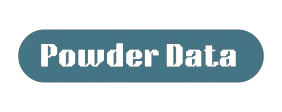In the world of dynamic marketing, understanding So, what is a marketing funnel? the marketing funnel is like having a treasure map to success. Whether you’re an experienced marketer or just diving into the vast ocean of digital advertising, understanding the marketing funnel is critical.
In its simplest form, a marketing funnel is a strategic framework that represents the customer journey, from initial exposure to a product or service to eventual conversion or purchase. Think of it as a funnel-shaped path that potential customers follow as they move toward purchase.
Why is this so important in the marketing process?
Well, think of it as the guiding light of your el salvador phone number data marketing efforts. A marketing funnel helps you understand your audience’s behavior and preferences, and allows you to tailor your marketing efforts accordingly. It’s a blueprint that aligns your strategies with how customers make decisions.
Join us on this educational journey as we dive deeper into the world of marketing funnels. We’ll walk through its various stages, explore its meaning, and digitizing processes: traditional vs. agile project management uncover how it can be your compass in the ever-changing marketing landscape. So, let’s embark on this adventure and uncover the secrets of the marketing funnel together.
Content
Marketing Funnel Concept
Visualizing the Path to Conversion
To truly understand the concept of a marketing funnel, it’s helpful to visualize it. Think of a real funnel—an inverted cone with a wide opening at the top and a narrow spout at the bottom. Now apply that analogy to the customer journey.
Sales Funnel Stages
Let’s break down the funnel into its main stages, each of which represents an important phase in the customer’s decision-making process:
1. Awareness : The top of the funnel is the widest part. This is where prospects become aware of a specific problem, need, or desire. They may not even know your brand exists yet. Your goal at this stage is to grab their attention and make them aware of your product or service.
Client Thinking : Curiosity and identification of a problem that needs to be solved.
2. Interest : Customers enter the interest stage as they move through the sales funnel. Here, they are actively seeking solutions to their problems or needs. Your job is to provide valuable content, such as blog posts, videos, or social media posts, that pique their interest and position your brand as a relevant authority.
Customer Thinking :
Engaging and exploring potential solutions and suppliers.
3. Consideration : Prospects are evaluating their options in the middle of the funnel. They compare your offerings to those of your competitors. Providing detailed product information, customer reviews, and case studies can have a big impact at this stage.
Customer Thinking : Evaluating and comparing available solutions; narrowing down choices.
4. Conversion : As customers move through the sales funnel, they reach the conversion stage. At this point, they decide whether to purchase a product, sign up for a service, or perform another desired action. Your goal is to make the conversion process as smooth and compelling as possible.
Client Thinking : Commitment and taking action to solve a problem or fulfill a desire.
5. Loyalty : The funnel doesn’t end with conversion – it continues at the loyalty stage. Satisfied customers become loyal, and they can become your advocates. Encourage loyalty with great customer service, loyalty programs, and ongoing engagement.
Customer Mindset :
Satisfaction and willingness to continue interacting with your brand.
6. Advocacy : The advocacy stage is So, what is a marketing funnel? at the bottom of the funnel. Loyal customers who are enthusiastic about your brand can become advocates by sharing their positive experiences with others. This word-of-mouth marketing can attract new potential customers, restarting the funnel.
